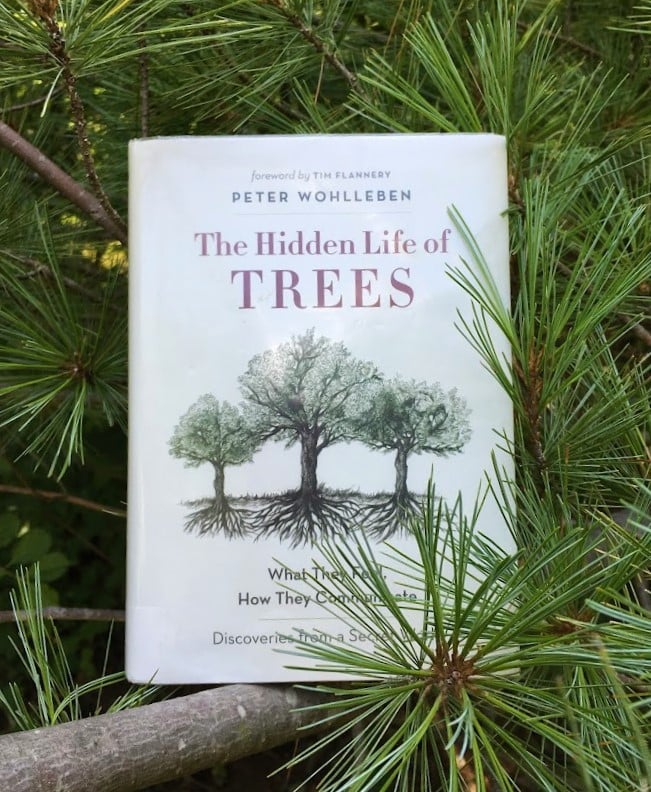Have you ever pondered the vibrant, bustling life concealed beneath the bark of a tree? What if we dared to imagine the intricate networking of roots and the uncharted communication that transpires among these towering giants? In “The Hidden Life of Trees,” Peter Wohlleben invites us into a world brimming with connectivity, empathy, and astounding intelligence that trees exhibit. This book is not merely a dissection of botany; it is an enthralling exploration of the complex social lives of trees and the ecosystems they inhabit.
Wohlleben, a forester with decades of experience observing trees in their natural habitats, adeptly merges scientific findings with relatable anecdotes. It is this blend of rigor and storytelling that makes his work a compelling read. Throughout the book, Wohlleben poses a playful yet profound question: What if trees possess an emotional life akin to our own? This inquiry does not merely ignite curiosity; it challenges us to rethink our understanding of sentient life beyond the realm of humans and animals, transcending the anthropocentric views we often hold.
The narrative unfolds around the notion of “wood wide web,” a term that encapsulates the mycorrhizal networks connecting trees through their root systems. These networks facilitate communication, nutrient sharing, and even mutual support among trees of different species. Imagine a nurturing mother—trees can foster their young through the soil, channeling resources to saplings in dire need. This revelation is both wondrous and humbling, extending the definition of family and community to the realm of trees.
As readers delve deeper, they encounter vivid descriptions of how trees interact with one another. For instance, Wohlleben illuminates the phenomenon of tree “talking.” He explains how trees release chemicals into the air and soil to warn neighbors of impending threats, such as insect infestations or environmental stressors. This defense mechanism is akin to a community alarm bell, alerting trees and providing an opportunity for them to bolster their defenses. The vibrant tapestry of relationships among trees unveils a complexity rarely recognized in the plant kingdom, a veritable society thriving in symbiosis.
The author’s analytical prowess shines when discussing the concept of cooperation versus competition. In the dense canopy of a forest, competition for light and nutrients might seem innate. Yet, Wohlleben elucidates how trees often prioritize cooperation. They share resources to nurture weaker members of their species, showing a preference for collective thriving over solitary success. This fascinating dynamic famously contrasts with human societal predispositions toward individualism and competition. Wouldn’t it be intriguing if, rather than mere survival of the fittest, we adopted the tree paradigm of collective support in our communities?
Wohlleben also delves into the life cycle of trees, vividly narrating their growth stages from seedling to majestic giant. He describes how trees age gracefully, developing intricate structures while also showcasing resilience against pests and diseases. A profound understanding emerges: the older the tree, the more vital its role in the ecology. This notion compels readers to reconsider human interventions in tree life and challenges us to safeguard these elder statesmen of forests. Are we prepared to confront the fragility of our ecosystems and take actionable steps toward their preservation?
While the book is richly informative, it is not devoid of emotional resonance. Wohlleben shares anecdotes that stir compassion and empathy, evoking a deep appreciation for trees as fellow beings rather than mere resources. He recounts the emotional toll of felling old trees and the sense of loss when a familiar giant meets an untimely end. Such narratives challenge us to confront our complicity in the destruction of natural habitats. How often do we reflect on the impact of our choices on these silent sentinels?
This emotional engagement propels the reader to advocate for a more sustainable relationship with nature. Wohlleben unflinchingly addresses the threats posed by industrial forestry and urban development. He urges us to become stewards of the earth, embracing practices that honor the complexity of our forests. Each chapter is imbued with a sense of urgency—a call to recognize that the fate of trees is intertwined with our own. Shall we accept this challenge and cultivate a deeper bond with nature?
The Hidden Life of Trees transcends a mere catalog of facts about flora; it is a clarion call to reimagine our relationship with the natural world. It is an invitation to recognize trees as sentient beings with social structures, emotional depth, and wisdom forged through millennia of evolution. As we close the pages of this remarkable tome, we are reminded that the trees around us possess a narrative that is both singular and shared—an intricate saga that merits our attention and care.
In conclusion, Peter Wohlleben’s exploration into the hidden life of trees invites us to tread lightly and with intention in our forests. It compels us to appreciate the silent stories written in rings of wood and shared among roots. So, next time you stroll through a glade, pause and consider: What are the trees whispering to each other? What silent challenges do they face? The answers await, nestled in a world of green, only waiting for the curious minds willing to listen.
